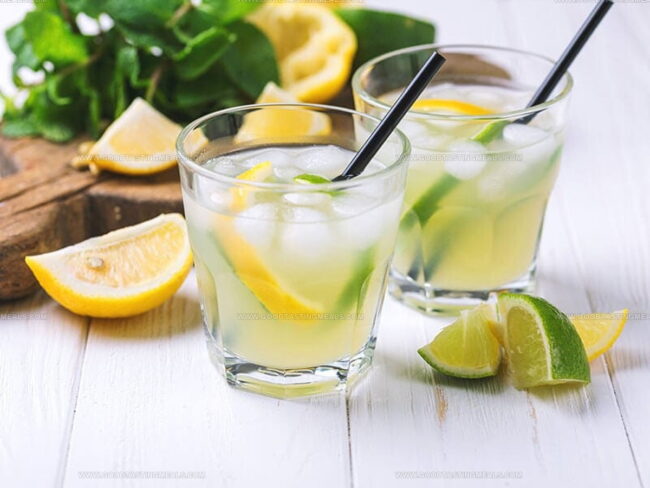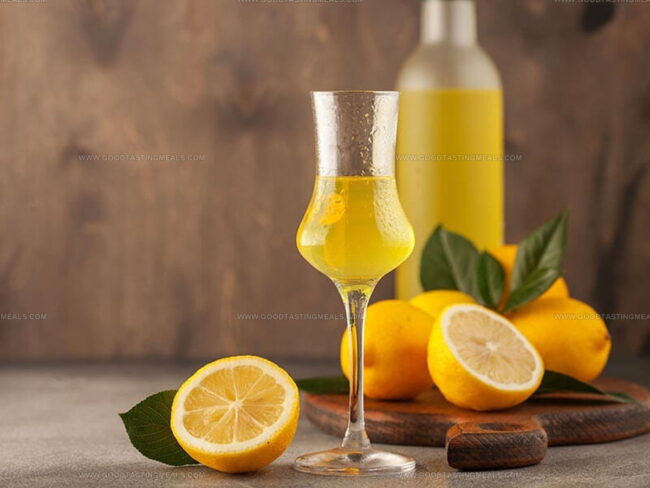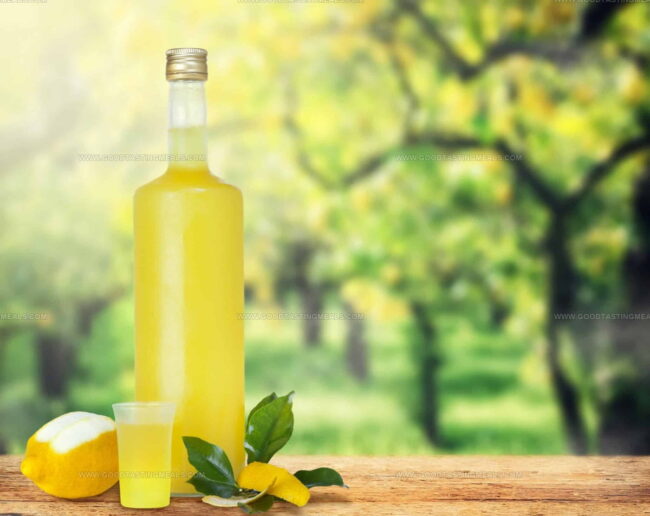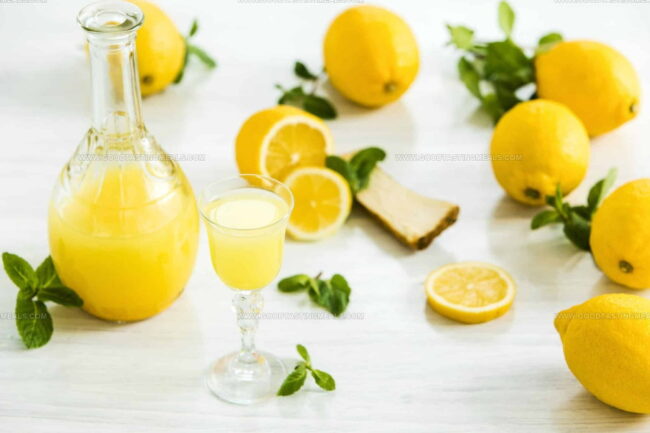What Does Limoncello Taste Like? A Sip of Sunshine in a Glass!
Limoncello, the vibrant Italian liqueur, has intrigued beverage enthusiasts worldwide with its sunny reputation.
Crafted in southern Italy, this zesty spirit carries a rich cultural heritage that goes beyond simple refreshment.
Locals have perfected this lemon-based drink over generations, transforming a simple ingredient into a sophisticated experience.
Each sip promises a unique sensory journey that captures the essence of Mediterranean sunshine.
Passionate bartenders and home mixologists appreciate limoncello for its complex characteristics that extend far beyond typical citrus liqueurs.
The drink's origins and intricate preparation methods contribute to its mystique and allure.
Understanding limoncello means diving into a world of flavor, tradition, and craftsmanship that beckons you to learn more about this remarkable Italian treasure.
What Is Limoncello?
Limoncello brings sweet, lemony magic from Italian shores.
Zesty lemons mix with sugar and alcohol to create this special drink.
Sipping limoncello feels like a traditional Italian moment.
Bars and homes across Italy serve this bright yellow liquid before or after meals.
Alcohol gives limoncello a grown-up twist on classic lemonade.
Chilled glasses sparkle in summer heat, making each sip refreshing.
Cold bottles of homemade limoncello can warm winter memories of sunny beach days.
Making limoncello at home requires careful steps.
Vodka works well for creating this smooth drink.
Neutral grain alcohol helps develop rich flavor over several weeks.
Careful selection of alcohol matters for perfect results.
Picking clean, pure alcohol ensures the liqueur stays delicious and true to its classic roots.
How Limoncello Tastes
Limoncello brings a powerful lemon punch to your taste buds.
Sweet syrup mixed during production creates a smooth flavor profile.
Without the sharp bite of fresh lemon juice, it feels more like a sweet citrus alcohol with gentle sugary notes.
Limoncello stands out as an exceptional handmade alcoholic drink.
Different brands offer unique taste experiences, so sampling helps find your favorite version.
Limoncello works wonderfully as an aperitif.
Sipping this drink feels similar to lemonade with an alcohol kick.
Summer sunshine matches its flavor perfectly, but winter evenings welcome this beverage too.
Making limoncello requires careful ingredient selection.
Organic lemons work best since regular lemons often come covered in waxy coating.
Grain alcohol and simple syrup blend together to create this delightful drink.
After filtering and chilling, your homemade limoncello becomes a smooth, refreshing summer companion.
Regional Variations in Limoncello Flavor
Limoncello flavors can change quite a bit depending on where it’s made in Italy.
In southern regions like the Amalfi Coast or Sorrento, limoncello often has a strong lemon aroma and a smooth, sweet finish thanks to the unique local lemons.
Some areas use lemons with thicker skins, which give a deeper, bolder citrus flavor, while others use thinner-skinned lemons for a lighter, brighter taste.
Homemade versions might be a bit stronger or sweeter depending on family recipes and the amount of sugar or alcohol used.
So, while all limoncello is refreshing and zesty, the exact taste can range from mild and sweet to sharp and tangy, based on the region and ingredients.
The Role of Lemon Varieties in Limoncello Taste
The kind of lemons used in limoncello makes a big difference in the flavor.
Some lemons, like the famous Sorrento or Amalfi lemons from Italy, have thick, fragrant skins packed with natural oils that give limoncello its strong, fresh lemon taste.
Lemons with thinner skins or less aroma will make a milder, less zesty drink.
Sweetness and tang also depend on the lemon variety: some are sweeter, while others are more tart, changing the balance of flavors.
So, the type of lemon can turn limoncello from light and gentle to bold and lively, making each batch a little unique.
How Limoncello Is Used in Cooking
Making limoncello is straightforward:
You need a mason glass jar or clear container with a tight seal.
Grab some organic lemons since regular lemons might have wax coating.
Limoncello requires only lemon rinds for brewing.
Lemon peels soak in grain alcohol for 4 to 6 weeks before mixing with sweet syrup to reach desired flavor.
Limoncello carries a sweet taste that masks its strong alcohol level.
Restaurants and bars often serve this drink as an aperitif or digestif.
Servers might bring limoncello before or after meals since its sugary notes pair well with desserts.
Warm summer evenings or chilly winter nights both welcome this smooth Italian beverage.
How to Make Limoncello at Home
Limoncello starts with fresh lemons and their outer skin.
Zest becomes the key ingredient, skipping the white part inside the fruit.
Kitchen tools matter for this special drink: you need a pot, a sieve, and a big sealed jar with a tight lid.
What You Need
Step By Step Guide
How to Drink Limoncello
Drinking Limoncello comes with some key tips from those who know it best.
Many who enjoy this drink suggest chilling it before sipping, which remains the most common method.
Limoncello offers several enjoyable serving approaches.
Cooling down the glass works well as a first step.
Drop crushed ice into the glass and wait a few minutes.
After some time, dump out the ice and pour Limoncello into the chilled container.
This technique helps showcase the drink's genuine taste.
Freezing empty glasses for a couple hours serves as another smart option.
Alternatively, setting glasses upside down in an ice bucket for thirty minutes works nicely.
Should Limoncello Be Drunk Plain?
Limoncello sits best when poured directly without mixing with ice, served in small shot glasses or delicate tulip tasting glasses.
Cold storage in freezers ensures this lemon liqueur reaches the perfect chilled temperature.
Drinking limoncello straight from its icy home lets you savor its pure, sharp taste exactly as Italian makers intended.
How Much Does Limoncello Cost?
Limoncello prices typically sit near $20 per bottle.
Some high-end or small-batch makers charge $25 or higher.
Cheaper brands can be found around $15, giving buyers different price points to choose from.
Can Limoncello Cause Intoxication?
Limoncello slides down smoothly, offering a delightful sip when chilled in a freezer-cold glass.
Its sweet lemon flavor brings a pleasant digestive sensation that makes drinking feel good.
With about 30% alcohol content, this Italian liqueur packs a strong punch similar to vodka.
Cold limoncello can lead to quick intoxication, so sippers should enjoy it carefully.
Is Drinking Limoncello Healthy?
Limoncello carries a reputation for health benefits due to its lemon-based origins.
Some folks suggest lemons work as a natural appetite reducer that could support weight loss.
Checking out the calorie count in a limoncello shot quickly reveals it's not as helpful as many might expect!
Restaurants serve limoncello after meals because lemons supposedly help with digestion.
Lemons contain high levels of vitamin C and antioxidants.
Whole lemons actually pack numerous wellness advantages.
However, drinking liqueur made from lemon peels doesn't provide the same health boost as consuming fresh lemons.
Limoncello might offer a tiny fraction of those potential wellness perks, but don't count on significant medical benefits from this sweet alcohol.
Alternatives to Limoncello and Similar Drinks
Limoncello has a specific flavor, but several alternatives exist based on preferences.
Lemon syrup like Toranis works as a non-alcoholic option.
Basic lemon syrup contains water flavored with lemon peels and sugar, serving as an alcohol-free version of this drink.
Individuals seeking another Italian digestif might consider grappa and sambuca.
Such beverages typically come with stronger alcohol content and pair well with coffee.
Alternative limoncello versions work for those wanting similar characteristics in an alcoholic drink.
Limoncello brings more than delicious taste to the table.
Weight loss supporters claim its potential benefits.
Despite high calories, many see it as an excellent digestive aid and post-meal beverage.
Lemon-based creation delivers vitamin C and antioxidants.
Summer heat and after-dinner moments find perfect refreshment in this drink.
Cold servings showcase limoncello's sweet and syrupy nature.
Tangy lemon zest mingles with caramelized sugars, softening alcohol's sharp edge.
Room temperature highlights delicate lemon notes.
Warm temperatures can make the drink taste overly sweet, similar to flat soda.
Careful serving ensures maximum enjoyment of this Italian specialty.




